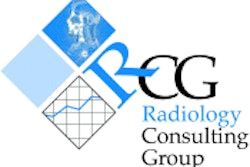The Architecture of Imaging, by Bill Rostenberg, AIA (1st edition)
American Hospital Publishing, Chicago, IL, 1995, $90
Writing a book about architecture is inherently difficult, because the author must balance art and function with science and technology. The task becomes even more complex when the book deals with architectural requirements for medical imaging.
Architecture and imaging have much in common; language, pattern and even process. However, the changes that occur are radically different.
In The Architecture of Imaging, Bill Rostenberg bridges the significant issue of change. In describing the process of planning, design, and construction of medical imaging spaces, he also deals with the incredible pace of scientific and technological development. This is no small task, given the diversity of design opportunities, settings and the scope of available technology.
The single most-asked question I receive from radiologists and radiology managers is "How much space do I need?" This book offers straight answers, without conjuring up magical formulas or mystical calculations. And while no two projects are alike, the information here is reliable, useful, and will keep you on a safe decision path.
In an era when we are asked to believe that design and physical settings are almost transparent, this book provides planning criteria and strategy to help understand a design project. You will not find the "one right answer" here. What you will find are thoughtful, typical planning solutions for imaging rooms, such as radiographic, mammography, CT or MRI -- and similar considerations for radiology process, such as reading, PACS, and workflow.
The information follows a strong architectural project outline, which describes the development process at the appropriate design intervals and determinates. This organization allows the book to be useful for anyone.
One of the most important aspects of this text is that it provides correlation between imaging technology and process, with various design requirements and approaches. It simplifies a design and planning process for both radiology and design professionals.
In that regard, this book will be useful when considering any radiology project – small or large, inpatient or outpatient and renovation or new construction. One of the significant goals of The Architecture of Imaging is to provide designers and healthcare providers with a common language so that they can establish a team approach to creating quality through collaboration. That goal is clearly accomplished and should be considered the primary success of this work.
No matter how the radiology imaging industry changes in the years ahead, the process and fundamental design concepts will remain constant. That is true for the most reliable radiographic room to the most complex MRI Room or a state of the art PACS. While the information may be old news to some readers, the connection to an architectural response is a welcome addition to both industries.
By Morris "Mo" SteinAuntMinnie.com contributing writer
January 31, 2002
Morris "Mo" Stein, president and founding partner of The Stein-Cox Group, is one of the country’s leading authorities in health care architecture, particularly in the areas of technology, including medical imaging, cardiac, and cardiac projects. He is a Fellow of the American College of Healthcare Architects.
Stein served as an advisor on and contributor to The Architecture of Imaging.
To purchase The Architecture of Imaging, contact Bill Rostenberg, vice president, SmithGroup, 225 Bush Street, 11th floor, San Francisco, CA 94104, 415-365-3463.
To read a radiologist’s perspective on this title, click here.
If you are interested in reviewing a book, let us know at [email protected].
The opinions expressed in this review are those of the author, and do not necessarily reflect the views of AuntMinnie.com.
Copyright © 2002 AuntMinnie.com



















